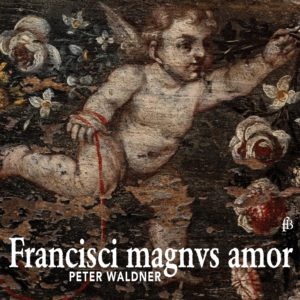‡ in ‡ memoriam ‡ François ‡ Badoud ‡
FRANCISCI MAGNVS AMOR – Exploring the great love of a collector and enthusiast of early keyboard instruments
Historic keyboard instruments
are not always easy things to like. The trouble starts, especially with plucked instruments, with the choice of plectra, made generally from quills. If they are too soft or too hard, it becomes difficult to articulate properly. The aim is to find a golden mean, but this becomes impossible if the touch is to be equal over the whole keyboard—in this case forty-five keys.
But should uniformity be a goal anyway? It’s hard to imagine the instrument makers of old limiting themselves in that way. If you choose animal-based materials for the plectra which pluck the strings and boar bristle for the jack springs, plus felt or leather dampers, the instrument develops an unpredictable life of its own which is compounded by the movement of the different types of wood—from the case and keyboard to the soundboard itself—according to ambient temperature and humidity. In short, historic keyboard instruments demand far more loving care and attention even than young children.
But players and listeners alike may discover an endless cosmos of nuances, including the unavoidable mechanical noises too, if they are willing to cope with all these idiosyncrasies.
As always, the two original instruments featured here are conceived for the musical demands of the renaissance and early baroque. Their range, with a «short octave» in the bass, corresponds to a standard that remained in force over centuries on both sides of the Alps.
Even the layman will notice that both instruments seem to sound stronger in their low and middle registers whereas the intensity of sound, for all its transparency, diminishes in the higher registers. This will be nothing new for music lovers who will be familiar with it from the example of renaissance organs.
Apart from a transparency they have in common, the harpsichord and virginals otherwise differ completely in sound. The virginals are characterised by an earthy timbre, rich in fundamentals, manifested by the frequent nomenclature «arpicordo» in Italy. In comparison, at first hearing the harpsichord sounds much more monosyllabic. Yet sharply attuned ears will discover a mysteriously colourful world in the intimate tones of this instrument with its single 8 foot register.
We owe thanks to generations of musicians and connoisseurs such as François Badoud, in whose hands both Italian instruments are preserved for now and in the future, for «rescuing» these rhythmically and polyphonically iridescent sounds for us today.
Sadly, François Badoud passed away during the preparation of this production in January 2020. He can be assured of our gratitude.
Bernhard Trebuch
16 January 2020

FRANCISCI MAGNVS AMOR – Exploring the great love of a collector and enthusiast of early keyboard instruments
Peter Waldner | harpsichord (Napels, 16th century), virginal (Florence, 16th century)
fb 2003534
1 CD
total time c 71:30 min.
EAN 4260307435349
released on 18th February 2020
FRANCISCI MAGNVS AMOR – Exploring the great love of a collector and enthusiast of early keyboard instruments
1 Annibale Padovano (1527–1575) | Toccata del sesto tono
Andrea Antico (c 1480–1538)
2 «Per dolor mi bagno il viso d’un liquor soave tanto» after M. Carra
3 «Che debbio fare» after B. Tromboncino [from «Frottole intabulate» Roma, 1517]
4 Marco Antonio Cavazzoni (1485–1569) | «Madame, vous avez mon cuor»
Anonymi (16th century)
5 «Io mi sono gioveneta» à 4 (Domenico Maria Ferrabosco)
6 Gazollo
7 La moretta
8 Il cramoneso
9 Caza la vegia milanese [from «Tabulature di Castell’Arquato»]
10 Peter Philips (1560–1628) | «Amarilli mia bella» after Guilio Caccini [from «Fitzwilliam Virginal Book»]
11 Girolamo Cavazzoni (c 1520–a 1577) | Canzon sopra Falt d’argens
12 Anonymus (16th century) | Pavana | Saltarello de la pavana [from: Tabulature di Castell´Arquato]
13 Antonio Valente (c 1520–c 1600) | Tenore del Passo e Mezzo
14 Ruggero Trofeo (c 1550–1614) | Canzon prima
15 Giovanni Picchi (c 1571–1643) | Ballo ditto il Pichi
16 Andrea Gabrieli (1532/33–1585) | Capriccio sopra il Pass’e mezzo antico
Giovanni Gabrieli (1557–1612)
17 «O sacrum convivium»
18 Fantasia in modo di Canzon francese à 4 voci
19 «Congratulamini»
Giovanni Picchi
20 Pass’ e mezzo
21 Saltarello del Pass’ e mezzo
22 Todescha
23 Ballo ongaro
24 Francesco Biancardi (1570–1607) | Fantasia terza
25 Giovanni Paolo Cima (c 1575–1630) | Canzon «La Graziosa» [from «Partito de Ricercari & Canzoni alla francese» Milano, 1606]


